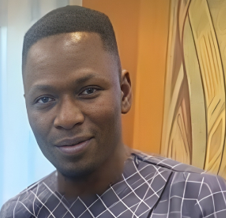Top of the day to you my cherished readers, I trust we are all keeping safe where we are. This week we are back with our serialized recaps from the 4th Ghana Green Building Summit 2021.
The building sector is one of the three consumption clusters – housing, transport and food – that have been identified by life cycle studies as the most important in terms of their environmental burden. Activities falling under “shelter” category specifically the building sector account for some 40% of overall energy use and associated greenhouse gas emissions and a majority of material resource use.
Accordingly, the sector offers a substantial emissions reduction potential at low or no cost. On that basis, sustainable construction should be the rule and not the exception. This session sought to look at attainability of green projects built using sustainable or local materials by sharing demonstration projects or developments. Highlights of the session are presented below:
The Panel included Emmanuel Stefanakis, Chief Sustainability Officer and CoFounder – EchoStone Opco LLC, USA; Imran Rahman, Chief Commercial Officer, Gush, Singapore, with Nadia Takyiwaa Mensah, CEO, Sixth Sense Manifesto moderating.
SESSION NOTES
Paradigm Shifting Technology
Emmanuel Stefanakis highlighted that when developers in emerging markets need a faster and more affordable way to build sustainable communities, EchoStone provides technology solutions to create quality homes for people who need them most. In his presentation he provided an overview of his company’s technology that produces a finished house in as little as 14-day timeframe and which empowers developers with technology solutions to create high-quality, affordable, and sustainable communities.
The technology is focused primarily on an advanced form of concrete called CLC. The system which is standardized to enable rapid and scalable construction employs a unique process that utilizes in-situ concrete machine, modular formwork system and foam concrete formula. This technology has been tested with model projects in Panama and in Nigeria.
Emmanuel then went ahead to share a few features about the Badagry, Lagos State project in Nigeria. He highlighted that it is the first IFC EDGE Advanced Certified project in Nigeria and only the third EDGE Advanced project in all of Africa, which resulted in about 53% energy savings, 42% water savings and 35% less embodied carbon through application of their technology and systems.
Further elaborating on their technology and process, Emmanuel intimated “It’s a portable in-situ concrete factory, about the size of a large SUV. It mixes cement, sand, and foaming agents to produce cellular lightweight concrete that is poured into formwork”. “It can be produced at different densities and therefore have extraordinary superior properties to traditional concrete while providing substantial strength.
We apply this primarily to single and double storey structures at the moment. The cellular lightweight concrete is about half the density of traditional concrete and by injecting a foaming agent into the concrete, there are millions of air bubbles, which provide insulation, and very good comfort for individuals”.
Purifying Indoor Air through Paints
Imran Rahman shared about his company, Gush’s flagship product — a paint which purifies the air and removes VOCs. The product is also anti-bacterial, removes odours and reduces chances of mold build up. According to Imran, “We have innovated an all-in-one solution. From a macro perspective, we learnt that there’s more relevance for us to focus on sustainable and green technologies to benefit the community. As such, the company invested heavily into R&D to develop new verticals of products along the lines of thermal solutions to make our buildings, homes, our environment, offices, hotels become more sustainable and friendly to the people who are going to stay in them.”
Ascertaining Sustainability
While the market is flooded with a lot of products labelled as being sustainable, there are ways that sustainability can be properly evaluated. According to Imran Rahman one of the best ways to distinguish the sustainability of a product is by evaluating its primary, secondary, and tertiary impact. This process is a great way to evaluate products generally or to measure them against a specific sustainability goal one is looking to achieve. Primary impact considers the sustainability of the manufacturing process. These options can limit the application of heat, excess mining of raw materials, or avoid gaseous manufacturing. Secondary impact encompasses the impact of the delivery, transportation, or importation. The reality of green building materials is that very few have access to them. Shipping green
building materials around the world can create a massive carbon footprint. Tertiary impact is the point of application. To solve this, Rahman suggests looking for materials that can solve more than one solution is a great place to start. In humid climates, for example, looking for building material that is mold resistant will benefit the long-term durability of a structure and limit the consumption of other products.
Striking the Right Balance
Imran noted that from well-known building materials like wood and bamboo, to lesser-known kelp and algae, plant-based building materials form a significant component of the green building materials market. With any nature-based solution, it’s important to consider how long these natural resources take to grow before reaching maturity. With wood for example, a few questions come up, for instance, is the cost of harvesting material from the forest worth the massive impact it will have on the local ecosystem? He recommended that green building solutions should ideally capitalize on natural processes without taking anything away from our natural resources.
Feeding off that point, Emmanuel reiterated that it is critical to evaluate the supply chain of plant-based building materials. As a great place to start, he recommended examining of farming methods, the source of materials, and the methods used to convert raw materials into usable products. For example, while bamboo exhibits excellent qualities like rapid growth, durability, and carbon capture, it can be unaffordable as a building material in many parts of the world and the adhesives used to bind the material for commercial use in things like flooring can be harmful to humans and the environment. To build a truly sustainable product, solutions must strike a balance between environmental, social, and economic benefits.
This session was first presented at 4th Ghana Green Building Summit 2021.
The writer is the Executive director of Yecham Property Consult & Founder of Ghana Green Building Summit.
Email: [email protected]
LinkedIn: Cyril Nii Ayitey Tetteh










